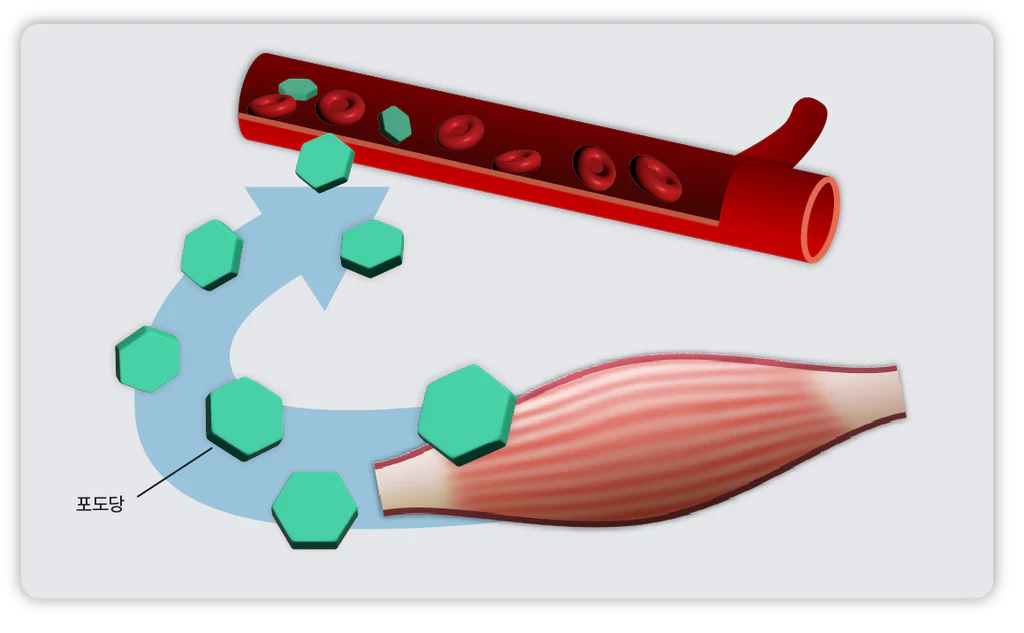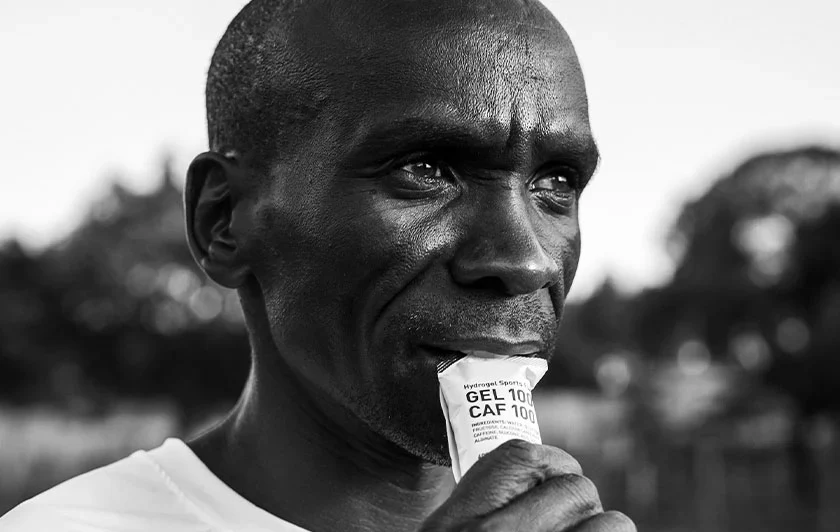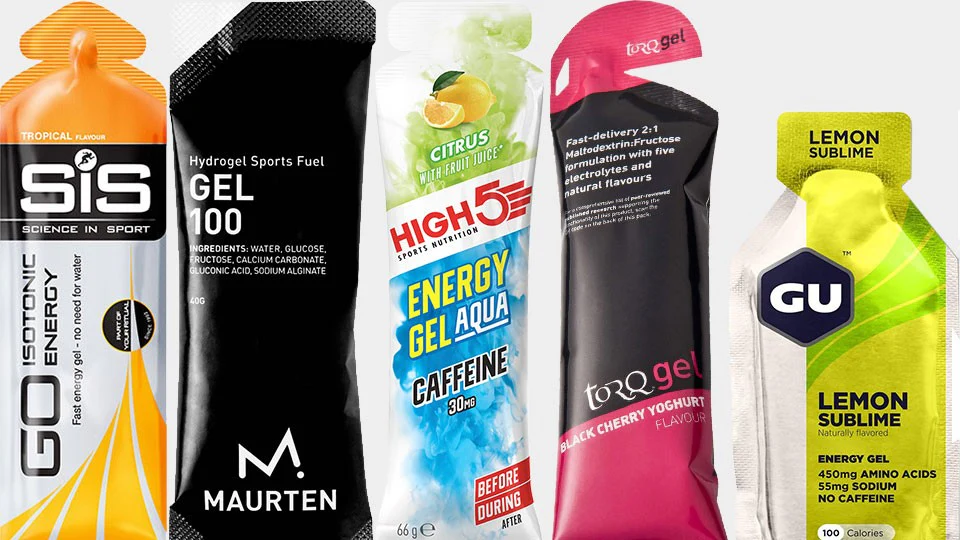
How to Take Energy Gels for a Successful Race
Introduction
Energy gels have become a staple item in marathon preparation. To maintain race performance all the way through, proper energy supply is essential. That’s why runners often wonder how many gels to bring, how much to take, and when to take them. However, once you understand how energy metabolism works and reflect on your race strategy, the answers may be surprisingly simple.

Image source: Boston Athletic Association
What Energy Sources Does the Body Use During a Marathon?
Although running is an aerobic activity, it doesn’t rely solely on so-called "aerobic metabolism"—that is, mitochondrial pathways. Glycolysis, the TCA cycle, and oxidative phosphorylation all operate simultaneously and continuously. Therefore, it’s important to understand what fuel is being used and through which system it is being metabolized. During a marathon, glycogen is broken down via glycolysis to produce ATP, and pyruvate is formed as a byproduct. The mitochondria then use pyruvate and oxygen to generate more ATP. However, since glycogen stores in the body are limited, it cannot be broken down indefinitely. That’s why the body also turns to other substrates like amino acids and fatty acids for mitochondrial metabolism.
The Limits of Glycogen and Energy Metabolism
An average adult male stores about 100g of glycogen in the liver and 400g in the muscles—a total of 500g. Well-trained athletes who consume adequate nutrition can store about 10–20% more. This amount of glycogen can produce around 2,000–2,400 kcal. However, liver glycogen is primarily reserved for maintaining brain function, and not all muscle glycogen is available for use during exercise. The human body has evolved to conserve glycogen for emergency situations, so only a portion of it is used during races.

Running 42.195 km (a full marathon) requires about 2,400–3,000 kcal. This means the stored glycogen alone is insufficient. The body, therefore, taps into blood glucose, fatty acids, amino acids, and anything else it can find to generate energy. However, when racing at near-LT2 intensity, metabolism shifts toward anaerobic pathways, making it harder to utilize fatty acids, which require more oxygen. At that point, one option left for the body is to break down muscle tissue to produce amino acids for energy.
Carbohydrate Intake and Performance Boost
There is another way to preserve muscle while supplying energy: consuming energy gels. These are high-concentration carbohydrate supplements designed for rapid energy replenishment during exercise. They are quickly absorbed and easy to digest, minimizing gastrointestinal strain. Energy gels can help maintain performance, delay fatigue, and directly impact race outcomes. For example, Eliud Kipchoge consumed around 100g of carbs per hour—roughly 200g total—from sports drinks and energy gels during his world-record marathon in Berlin 2018. The benefits of energy gels are not limited to elite athletes. In a 2013 Copenhagen Marathon study, amateur runners who took three gels per hour finished 4.7% faster on average than those who did not. Modern energy gels now go beyond basic carbs, incorporating vitamins, electrolytes, amino acids, and caffeine to further enhance performance.
 Image source: Maurten
Image source: Maurten
How Much Energy Gel Should You Take?
The optimal amount of energy gel intake depends on exercise duration and intensity. Sports nutritionist Asker Jeukendrup recommends consuming 90g of carbohydrates per hour for exercise lasting longer than 3 hours. Since most energy gels contain about 25–30g of carbs, this equates to roughly three gels per hour.

Image source: runandbecome.com
Of course, this guideline applies to long-duration exercise near LT2 intensity. If the duration is short or the intensity is low (allowing stored energy to suffice or promoting greater use of fat), energy gel consumption may not be necessary. The decision should be based on your race duration and pace.
So… Should You Take Energy Gels?
In conclusion, if you're "racing" a marathon rather than just finishing it, energy gels are highly recommended to prevent muscle loss. At a pace near your lactate threshold, glycogen consumption increases and stores are insufficient. The body responds by conserving glycogen and breaking down muscle for amino acids—leading to muscle loss. Thus, energy gels help not only with performance maintenance but also with muscle preservation. Instead of overeating after the race, supply adequate energy during the race to improve your record and protect your valuable muscle mass.
References
- Burke, L. M. (2007). Nutrition strategies for the marathon: Fuel for training and racing. Sports Medicine, 37(4–5), 344–347.
- Burke, L. M., Hawley, J. A., Wong, S. H. S., & Jeukendrup, A. E. (2011). Carbohydrates for training and competition. Journal of Sports Sciences, 29(Suppl. 1), S17–S27.
- Hansen, E. A., et al. (2014). Improved marathon performance by in-race nutritional strategy intervention. International Journal of Sport Nutrition and Exercise Metabolism, 24(6), 645–655.
- Jeukendrup, A. E. (2004). Carbohydrate intake during exercise and performance. Nutrition, 20(7–8), 669–677.
- Jeukendrup, A. E. (2011). Nutrition for endurance sports: Marathon, triathlon, and road cycling. Journal of Sports Sciences, 29(Suppl. 1), S91–S99.
- Jeukendrup, A. E. (2013). In Food, Nutrition and Sports Performance III (pp. 91–99).
- Marquet, L.-A., et al. (2016). Periodization of carbohydrate intake: Short-term effect on performance. Nutrients, 8, 755.
- Mata, F., et al. (2019). Carbohydrate availability and physical performance: Overview and recommendations. Nutrients, 11(5), 1084.
- Maughan, R. J., et al. (2018). IOC consensus statement: Dietary supplements and the high-performance athlete. British Journal of Sports Medicine, 52, 439–455.
- Patterson, S. D., & Gray, S. C. (2007). Carbohydrate-gel supplementation and endurance performance during intermittent high-intensity shuttle running. International Journal of Sport Nutrition and Exercise Metabolism, 17(5), 445–455.
- Phillips, S. M., et al. (2012). Carbohydrate gel ingestion improves intermittent endurance capacity in adolescent players. European Journal of Applied Physiology, 112(3), 1133–1141.
- Rapoport, B. I. (2010). Metabolic factors limiting performance in marathon runners. PLoS Computational Biology, 6(10), e1000960.
- Stellingwerff, T., & Cox, G. R. (2014). Systematic review: Carbohydrate supplementation and exercise performance. Applied Physiology, Nutrition, and Metabolism, 39(9), 998–1011.